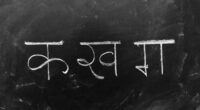Class XI Physics : Gravitation Questions

Challenging Conceptual Questions: Gravitation
Class 11 Physics – Click on questions to reveal detailed answers
The gravitational field intensity (E) is the negative gradient of potential.
\[ E = -\frac{dU}{dr} = -\frac{d}{dr}(-Kr^{-n}) = -\left( K n r^{-n-1} \right) \]
\[ E = -K n r^{-(n+1)} \]
For a realistic gravitational field (like Earth’s), the field must be attractive and follow the inverse-square law, meaning E ∝ -1/r².
Comparing, we get: -(n+1) = -2 ⇒ n = 1.
Thus, for a realistic field, U(r) ∝ 1/r, which is the standard form.
For a satellite in a circular orbit of radius `r` around a planet of mass `M` and radius `R`:
\[ \frac{GMm}{r^2} = m\omega^2 r \]
Substituting ω = 2π/T:
\[ \frac{GM}{r^2} = \frac{4\pi^2 r}{T^2} \]
\[ T^2 = \frac{4\pi^2 r^3}{GM} \]
Mass of the planet M = (4/3)πR³ρ. For a close orbit just above the surface, r ≈ R:
\[ T^2 = \frac{4\pi^2 R^3}{G \cdot \frac{4}{3}\pi R^3 \rho} = \frac{3\pi}{G\rho} \]
\[ T = \sqrt{\frac{3\pi}{G\rho}} \]
This shows that the period T is independent of the planet’s radius R and depends only on the density ρ.
Consider a small element `dx` of the rod at distance `x` from the foot of the perpendicular. Mass `dm = λdx`.
The field due to this element is `dE = G dm / s²`, where `s` is distance to point P.
Due to symmetry, vertical components cancel. Net field is integral of horizontal components:
\[ dE_{net} = \frac{G \lambda dx}{s^2} \cdot \frac{a}{s} = \frac{G \lambda a dx}{(a^2 + x^2)^{3/2}} \]
Integrating from x = -∞ to ∞:
\[ E = \int_{-\infty}^{\infty} \frac{G \lambda a dx}{(a^2 + x^2)^{3/2}} \]
Using standard integral, this gives:
\[ E = G \lambda a \cdot \frac{2}{a^2} = \frac{2G\lambda}{a} \]
The field is inversely proportional to the perpendicular distance `a`.
Apparent weight is the normal reaction (mg’) from Earth’s surface. True gravitational force (mg) acts towards center. A body experiences centrifugal force mω²R cosφ radially outward.
Resolving forces, effective weight:
mg’ ≈ mg – mω²R cos²φ
- At poles (φ = 90°), cosφ = 0, so mg’ = mg (maximum)
- At equator (φ = 0°), cosφ = 1, so mg’ = mg – mω²R (minimum)
Weight is maximum at poles and minimum at equator due to centrifugal force being maximum at equator and zero at poles.
Let distances from center of mass be r₁ and r₂, so d = r₁ + r₂.
From center of mass: M₁r₁ = M₂r₂.
Both stars have same angular velocity ω. Gravitational force provides centripetal force:
For star M₁: (G M₁ M₂) / d² = M₁ ω² r₁
We know r₁ = M₂ d / (M₁ + M₂)
Substituting: (G M₂) / d² = ω² [M₂ d / (M₁ + M₂)]
G / d² = ω² [d / (M₁ + M₂)]
ω² = G (M₁ + M₂) / d³
Since ω = 2π/T:
\[ T = 2\pi \sqrt{\frac{d^3}{G(M_1 + M_2)}} \]
This is Kepler’s third law for a binary system.
The formula U = -GMm/r sets U=0 at r→∞. This works for isolated systems where gravitational influence vanishes at infinity.
In an infinite, homogeneous universe, gravitational potential at any point is sum of contributions from all masses. This sum doesn’t converge to a finite value – it depends on integration path, leading to undefined (infinite) potential.
This paradox highlights that Newtonian gravity isn’t well-suited for infinite static universes and motivated Einstein’s general relativity, where spacetime geometry describes gravity.
Outside cylinder (r > R): Treated as thin rod. E ∝ 1/r. Graph decreases like 1/r.
Inside cylinder (r < R): Using Gauss’s law for gravitation, field depends only on mass enclosed within Gaussian surface. Mass enclosed ∝ r², so E ∝ (M_enc)/r ∝ (r²)/r ∝ r.
Graph starts from E=0 at r=0, increases linearly to maximum at r=R, then decreases as 1/r for r>R.
No, orbits wouldn’t change significantly.
Gravitational force F = GMm/r², where M is Sun’s mass. Since mass M remains same and planetary distances r are much larger than Schwarzschild radius of black hole, force remains identical.
Planets would continue in same elliptical orbits. Only change would be removal of light and radiation pressure, which have negligible effects on orbits compared to gravity.
Let chord be distance `d` from Earth’s center. At point distance `x` from midpoint, gravitational force due to mass enclosed within radius `r = √(d² + x²)`.
Only component along tunnel (F cosθ) provides restoring force.
F_grav = (4/3)πGρ m r
F_net = -F_grav cosθ = -[(4/3)πGρ m r] * (x/r) = -[(4/3)πGρ m] x
Since (4/3)πGρ is constant, F_net = -k m x → condition for SHM.
ω² = (4πGρ/3), T = 2π/ω = √(3π / Gρ)
This period is same for all chords and equals period for tunnel through center.
Work required = Gravitational binding energy of system = -U_total
Mass of each sphere M = (4/3)πR³ρ
Distance between centers = 2R
Mutual P.E.: U₁₂ = -G M² / (2R)
Self-energy of each sphere: U_self = -(3/5)GM²/R
Total initial P.E.: U_initial = 2 * [-(3/5)GM²/R] + [ -GM²/(2R) ]
U_initial = – (6/5 + 1/2) GM²/R = – (17/10) GM²/R
Work required = 0 – U_initial = (17/10) GM²/R
Using energy conservation:
Initial K.E. = (1/2)m (√(gR))² = (1/2)m gR
Initial P.E. = -GMm/R = -mgR
Total Initial Energy = (1/2)mgR – mgR = – (1/2)mgR
At height R, distance from center = 2R
Final P.E. = -GMm/(2R) = – (1/2) mgR
Energy conservation: – (1/2)mgR = (1/2)mv² – (1/2)mgR
(1/2)mv² = 0 ⇒ v = 0
The probe comes to rest momentarily at height R.
The point mass creates non-central gravitational force. Primary force is towards planet’s center, but additional force has components perpendicular to orbit plane and within plane that aren’t purely radial.
This perturbing force creates torque on satellite’s angular momentum. Since τ = dL/dt, this torque causes angular momentum vector (and orbital plane) to precess.
Satellite’s orbit won’t be perfect closed ellipse but will undergo nodal precession.
Escape velocity is minimum speed to reach infinity with zero kinetic energy.
Energy Conservation: (K.E. + P.E.)_surface = (K.E. + P.E.)_infinity
(1/2)mv_esc² + (-GMm/R) = 0 + 0
(1/2)mv_esc² = GMm/R
v_esc = √(2GM/R)
Generalizing for distance `r` from center:
(1/2)mv_esc² + (-GMm/r) = 0
v_esc(r) = √(2GM/r)
Using shell theorem and symmetry. Consider point P inside shell. Imagine double cone with vertex at P, intersecting shell in areas dA₁ and dA₂.
Masses dm₁ = σ dA₁ and dm₂ = σ dA₂.
Fields at P: dE₁ = G dm₁ / r₁² and dE₂ = G dm₂ / r₂², directed towards dA₁ and dA₂.
From geometry, dA₁ / r₁² = dA₂ / r₂² (same solid angle). So dm₁ / r₁² = dm₂ / r₂², thus dE₁ = dE₂.
Since directions are opposite, they cancel exactly. Entire shell can be divided into such pairs, leading to complete cancellation.
Hence, net field inside hollow spherical shell is zero.
Total energy for circular orbit: E = -GMm/(2r)
Initial orbit r_i = 2R: E_i = -GMm/(4R)
Final orbit r_f = 4R: E_f = -GMm/(8R)
Work done = Change in mechanical energy:
W = E_f – E_i = [-GMm/(8R)] – [-GMm/(4R)]
W = (-1/8 + 2/8) GMm/R = (1/8) GMm/R
Relationship: E = -dV/dx
dV = -E dx = -(-k/x²) dx = k/x² dx
Integrating from x=a to x=b:
ΔV = V_b – V_a = ∫_a^b (k/x²) dx = k [ -1/x ]_a^b
ΔV = k (1/a – 1/b)
Using energy conservation: Initial E = 0 (at rest at infinity)
Final E before atmosphere = (1/2)mv² – GMm/(R_E + h)
0 = (1/2)mv² – GMm/(R_E + h)
(1/2)v² = GM/(R_E + h) = g R_E² / (R_E + h)
v = √[ 2g R_E² / (R_E + h) ]
R_E = 6.4×10⁶ m, h = 1×10⁵ m, R_E + h ≈ 6.5×10⁶ m
v ≈ √[ 2 × 9.8 × (6.4×10⁶)² / (6.5×10⁶) ] ≈ 11,100 m/s or 11.1 km/s
Slightly less than 11.2 km/s escape velocity because it starts from 100 km height, not surface.
Weightlessness is sensation of having no apparent weight – no normal reaction force from supporting surface.
Astronaut and space station are both in free fall towards Earth with same acceleration (centripetal acceleration).
No relative acceleration between them, so astronaut doesn’t press against walls or floor.
It’s not absence of gravity, but state of continuous free fall.
Orbital velocity v = √(GM/r) and period T = 2π√(r³/GM) for circular orbit are independent of orbiting mass.
Centripetal force requirement: GMm/r² = mv²/r → mass `m` cancels out.
If satellite halves mass without impulse (both parts continue with same velocity), remaining part will continue in exact same orbit.
It will not fall or drift away.
Using Kepler’s third law: T² ∝ r³
(T_planet / T_earth)² = (r_planet / r_earth)³
(4)² = (r_planet / 1 AU)³
16 = (r_planet)³
r_planet = 16^(1/3) = (2^4)^(1/3) = 2^(4/3) AU
r_planet ≈ 2.52 AU
School Online Tests on Gyankatta
Master Gravitation Concepts
Test your understanding with our carefully curated question sets
Gravitation Fundamentals
Perfect for beginners. Build your foundation with basic concepts, definitions, and straightforward problems.
- Basic concepts & formulas
- Direct application questions
- Quick revision friendly
Gravitation Applications
Apply gravitational concepts to real-world scenarios, planetary systems, and practical situations.
- Real-world applications
- Analytical thinking
- Problem-solving focus
Advanced Gravitation
Challenge yourself with complex problems, derivations, and multi-concept integration.
- Complex derivations
- Multi-concept problems
- Higher-order thinking
Instant Results
Get detailed performance analysis immediately after submission
Timed Tests
Practice under exam conditions with built-in timers
Comprehensive Coverage
All topics from NCERT Class XI Physics syllabus
Gyankatta : Empowering students through quality education.

